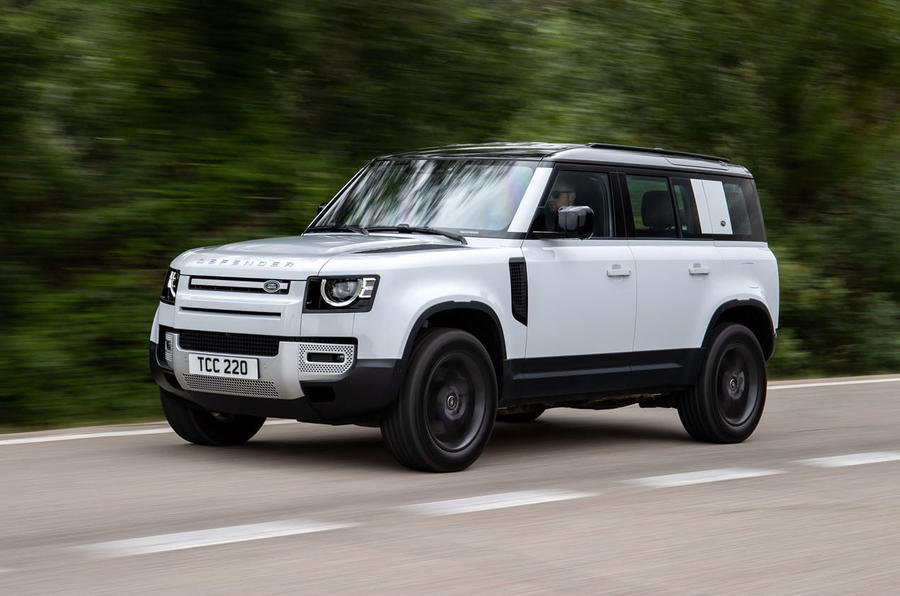What is it?
This is the first of two Land Rover Defenders we’re trying this week, and although it’s less glamorous than the one with the V8 supercharged engine (stay tuned), it turns out to be more compelling, to the extent that it could be our favourite Defender yet.
The Land Rover a plug-in hybrid, badged P400e, and available in long-wheelbase 110 form only at the moment, so five doors and 5.02m long. It has a 296bhp 2.0-litre turbocharged petrol engine and 139bhp permanent magnet electric motor in the nose, which are clutched independently onto an eight-speed automatic gearbox, driving all four wheels and with a low-ratio transfer box, which means power can be provided by internal combustion, electric motor or a combination of the two, even heavily off road. For the most part, it will work out which to use itself.
In space beneath the boot is a 19.2kWh battery, which can charge at up to 50kW and allows an 80% charge in half an hour or, on a good domestic charger, a couple of hours. And if you stick it an all-electric EV mode, the official range is 27 miles.
If you want to preserve that range for later – when you get into town from the country - you can select a Hold mode and it’ll reserve its current state of charge.
Or, if you put it in Hybrid mode, it’ll sort itself out and give you its best economy while it winds down the battery charge to nothing, whereupon it’ll behave like any non-pluggable full hybrid.
Whatever the power, the Defender is a big car. It’s 2.1m wide across the mirrors and 1.97m tall, which are all things that make it, in Land Rover speak, a 4x4 rather than an SUV. And with the weight of the batteries, this version weighs 2525kg, around 200kg more than a diesel version, which until now has been the only variant that we’ve been able to drive – and which can tow 3500kg, rather than the plug-in’s 3000kg. But for all of the diesel’s virtues – and we’ve come away well impressed with this 4.5-star road test car – sparkling fuel economy is not one of its strongest points.




























































Join the debate
Add your comment
The automotive equivalent of a watch that tells you the temperature on the moon. Why? For what purpose? Get a normal car. You know, one that actually does useful stuff. Or buy this, and some combat shorts, a drone, oh, and the wristwatch that tells you the temperature on the moon.